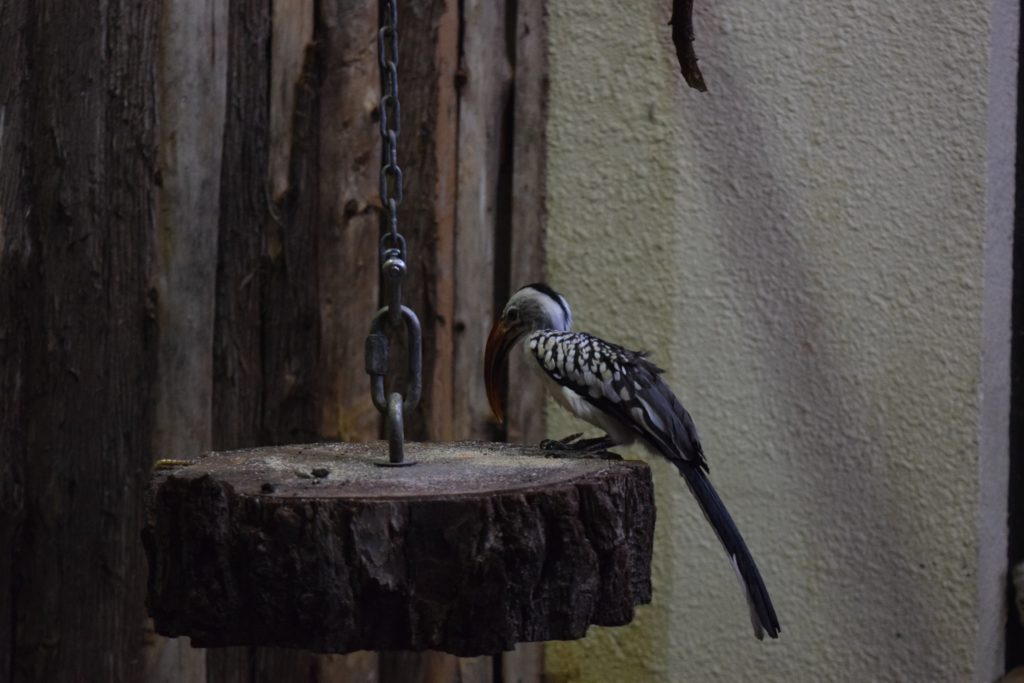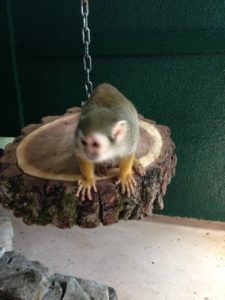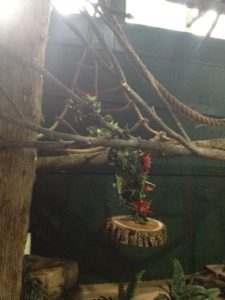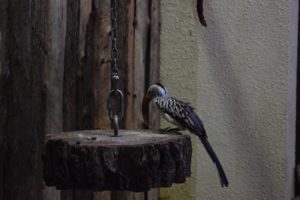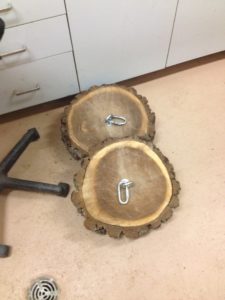Description
Here is a very useful piece of enrichment that can be used for many different applications. This hanging log platform can be used as a challenging feeding station or an exhibit feature as an unstable perch. In the pictures below it is being used by a hornbill and a squirrel money but really any small mammal and bird could use this. The concept is also easily scaled and could theoretically be used by larger animals as well.
Building Instructions/ Materials
In order to build this item you only need a few materials and tools:
Building steps
- First you need to find logs of the appropriate width to build this platform, ideally you want it to be made out of a form of hardwood as it will make it less prone to splitting and make it more durable
- Once you have found the right logs, cut to the desired thickness, the ones in the picture are approximately 6 inches thick, take weight into account, but for the most part you don’t want to make these very thin, they will become very brittle and will be prone to warping/ cracking
- This is the step you want to spend the most time on, you want to find the centre of mass of the disk in order to make it hang properly, hopefully in the last step you tried to make the cut as even as possible, as this will make balancing much easier. Once you are confident you have found the exact centre of the disk, drill a hole and put your eye hook in.
- Once your eye hook is in and you are happy with the way it hangs, attach your chain and find a good spot to hang in the exhibit.
Tips/ Comments
This is a very versatile hanging log platform and you can modify the basic concept to apply to many different ideas. Any sturdy round object can be hung this way very effectively. You can also easily add fire hose to the chain to make it safer. You could also drill holes in the log to hide things like seeds or peanut butter.

